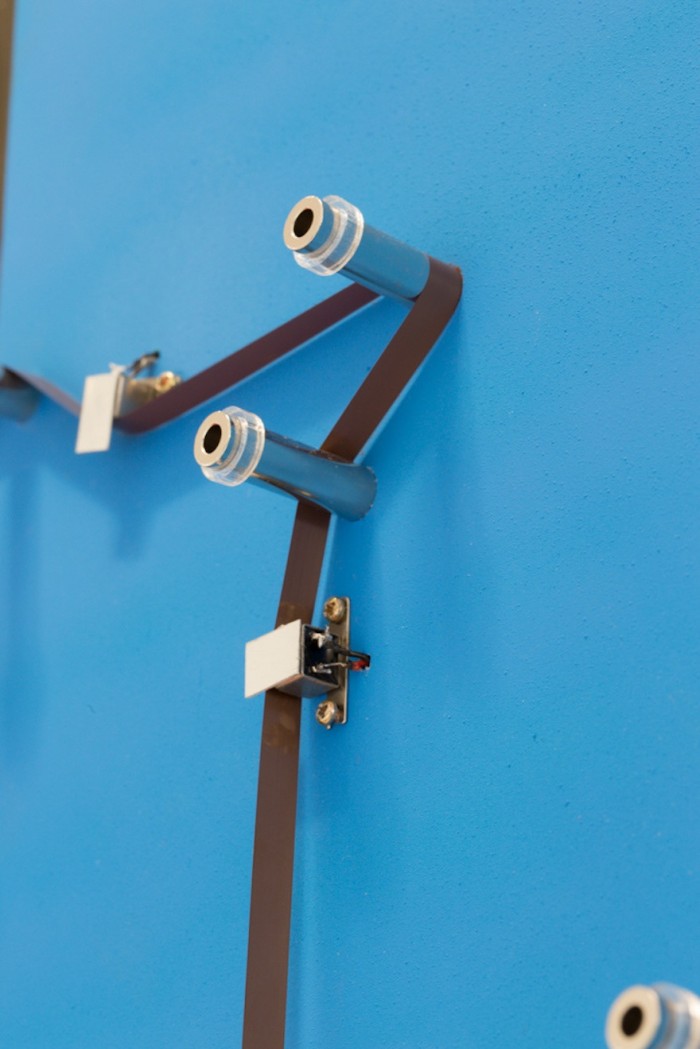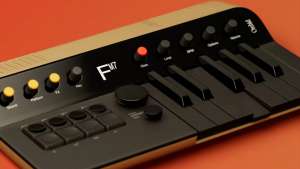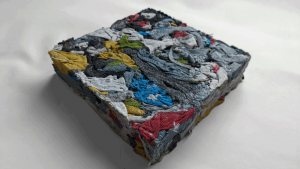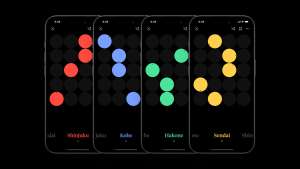Sound Revival, by Royal College of Art graduate James Boock, is a range of objects designed for musicians. It is used to create sound visually when performing. Sound Revival puts the performance back into live music by visually reacting to four digital sounds. They are used in musical performances to produce an engaging experience and unique sound.
Because the process of making music is often concealed within a computer or processor, the design aims to create a greater understanding of how sound effects are generated and give a visual identity to the unseen. The objects also result in a performance that brings the listener and performer together.
Voice Modulation uses a compression technique: The sound made from an instrument is channelled out of an airtight speaker through a tube, which is placed into the user’s mouth. Movement of the mouth then modulates the output sound. Boock collaborated with musician Matt Fletcher, who plays for the band GEF to design the devices which alter sound the same way a digital tool might.











